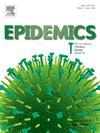停止在最容易预测病毒动态的污水处理厂取样
IF 2.4
3区 医学
Q2 INFECTIOUS DISEASES
引用次数: 0
摘要
废水取样已被证明是监测传染病动态的有效工具。在2019冠状病毒病大流行期间,开放了许多采样点,以便获取尽可能多的信息。然而,随着大流行的减弱,并非所有采样点都需要继续运作。在这项工作中,我们研究了一种评估采样点的方法,该采样点可以停止采样。我们应用机器学习方法,根据其他地点前几天的频率,预测一个地点第二天废水站点的突变频率,然后记录预测误差。预测误差最低的地点是包含最少量独特信息的地点,采样可以在这些地点停止。我们展示了评估预测误差的系统方法和对误差的几种解释。我们在瑞士的五个位置上演示了这种方法,找到了两个可以以最小的信息损失移除的位置。本文章由计算机程序翻译,如有差异,请以英文原文为准。
Ceasing sampling at wastewater treatment plants where viral dynamics are most predictable
Wastewater sampling has been shown to be an effective tool for monitoring the dynamics of an infectious disease. During the COVID-19 pandemic, many sampling sites were opened in order to capture as much information as possible. However, with the pandemic waning, not all sampling sites need to continue operating.
In this work, we investigate a method for evaluating sampling sites for which sampling can stop. We apply machine learning methods to predict the mutation frequencies from wastewater sites on the next day in one location based on the frequencies on previous days in other locations, then record the prediction error. The sites with the lowest prediction error are the ones that contain the least amount of unique information, and sampling can cease at those locations. We demonstrate a systematic approach to evaluating prediction errors and several interpretations of the error. We demonstrate this method on five locations in Switzerland, finding two locations that could be removed with minimal information loss.
求助全文
通过发布文献求助,成功后即可免费获取论文全文。
去求助
来源期刊

Epidemics
INFECTIOUS DISEASES-
CiteScore
6.00
自引率
7.90%
发文量
92
审稿时长
140 days
期刊介绍:
Epidemics publishes papers on infectious disease dynamics in the broadest sense. Its scope covers both within-host dynamics of infectious agents and dynamics at the population level, particularly the interaction between the two. Areas of emphasis include: spread, transmission, persistence, implications and population dynamics of infectious diseases; population and public health as well as policy aspects of control and prevention; dynamics at the individual level; interaction with the environment, ecology and evolution of infectious diseases, as well as population genetics of infectious agents.
 求助内容:
求助内容: 应助结果提醒方式:
应助结果提醒方式:


